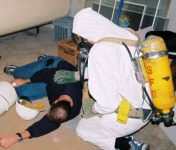California Appeals Board: Was Workers’ Exposure Willful?
What’s your procedure for handling workers’ complaints about health symptoms? Some health symptoms are “nonspecific,” meaning they can have more than one possible cause. A headache, for example, can result from exposure to hazardous airborne chemicals—or the worker could be coming down with a cold or might have skipped lunch. It’s important to carefully investigate […]





